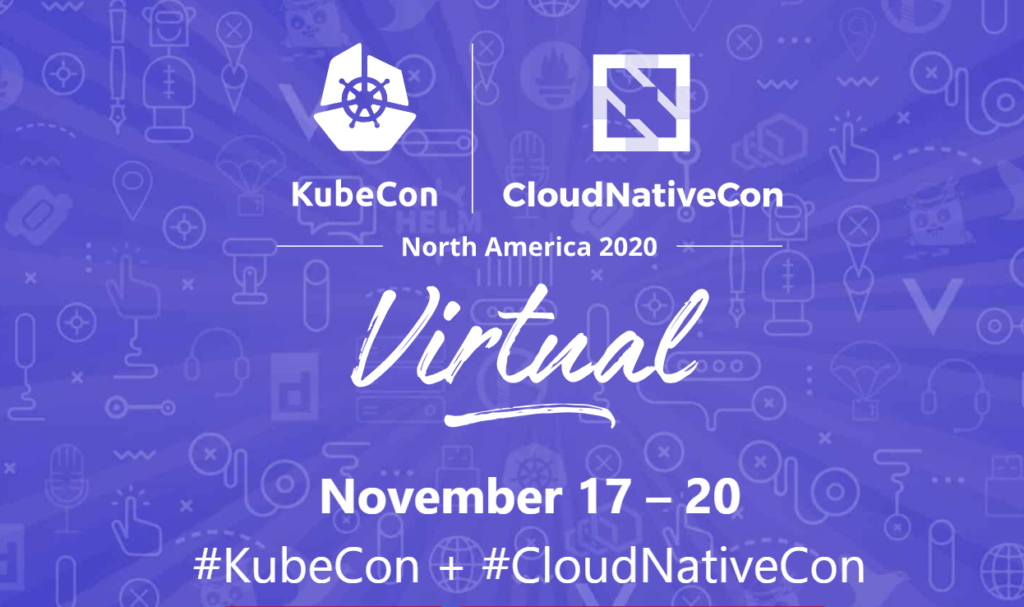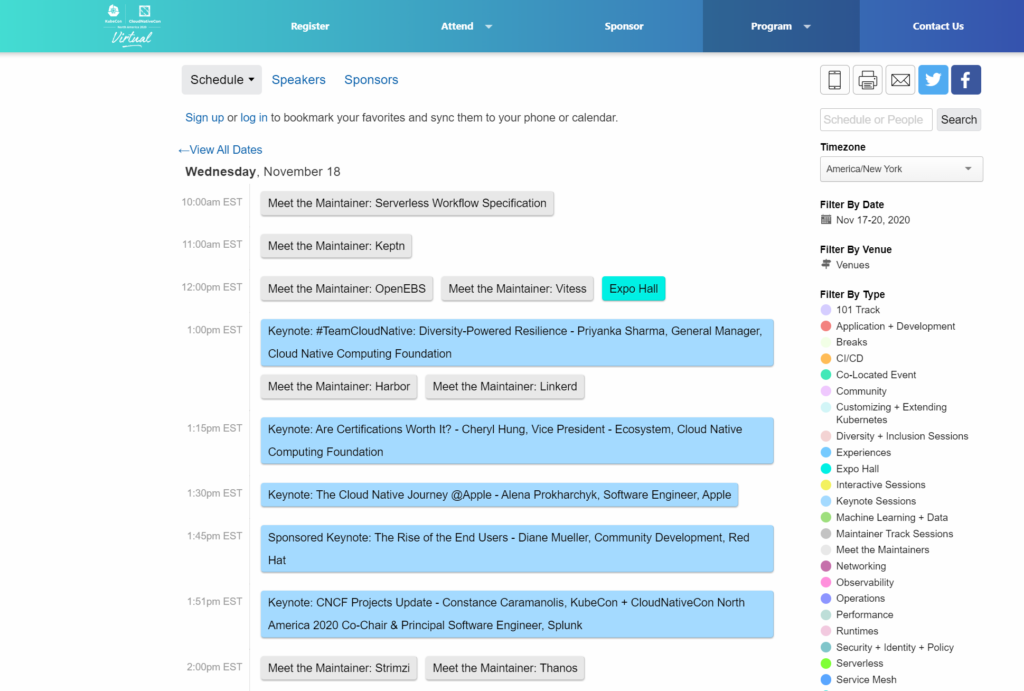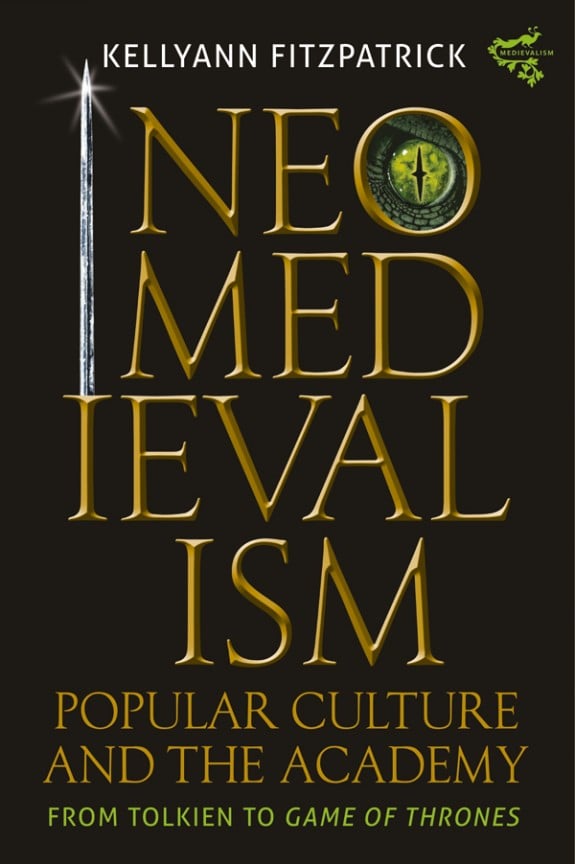Last week I had the chance to speak with Constance Caramanolis, Principal Software Engineer at Splunk, about her experiences serving as a program co-chair of KubeCon + CloudNativeCon North America 2020, which is happening next week (November 17-20).

We talked a little bit about the event itself, a lot about the responsibilities of a program co-chair, and also about some of the pros and cons of moving to a virtual event format. We wrapped up with some of the reasons that folks should consider attending (especially if you have never been to a KubeCon + CloudNativeCon before).
You can watch the full interview in the video embedded above or access the video, transcript, and related resources at https://redmonk.com/videos/co-chairing-kubecon-cloudnativecon-with-constance-caramanolis
Below you will find some of my key takeaways and related excerpts from our discussion.
KubeCon + CloudNativeCon is about more than projects that start with “K”
For the benefit of folks who are not familiar with KubeCon + CloudNativeCon, I asked Caramanolis to describe the event and what attendees can expect. One point she quickly made was that the event name itself is important in designating the event as a space not only for people interested in Kubernetes, but also for those interested in and involved with other Cloud Native Computing Foundation (CNCF) projects:
It’s just a gathering of individuals who want to talk about various CNCF projects. ‘KubeCon,’ it was like, OK, I guess we would primarily focus on Kubernetes. But as you know, the CNCF landscape got bigger and there’s a lot more projects now. That’s why ‘CloudNativeCon’ is just as important in terms of the title. So, you can view it two ways (and this doesn’t as easily apply in the virtual world), but one is learning from talks, attending, and just seeing how other people think about some of the problems. And the second way is learning from the individuals themselves, kind of like how we say the ‘hallway track.’
As per the excerpt above, Caramanolis also very quickly shifted the discussion from projects to people, noting that the “hallway track” component of the event–where attendees get to chat with each other informally–has been more difficult to replicate in the shift to a virtual format:
And so it’s a great opportunity to learn from others and collaborate…. We’ve made the joke that we should have more whiteboards everywhere just because, you know, you’re probably going to leave a talk and be like, ‘hey, I have a question for you. Let me draw my architecture and let’s debug these things.’ There’s always just a fun place to collaborate on projects and problems together and also make friends. Right. I guess you kind of accidentally become friends with the people because you’re talking to them all the time and then it’s a good opportunity to meet face to face. But I know that’s different in the virtual world.
And so at least within the virtual world, we know the hallway track isn’t as easy to do. And so, we are adding a lot more virtual connection moments. There’s the happy hour. There’s bingo. I think there’s still karaoke. There’s all these things there. So you can still connect with other individuals who like to attend these conferences and still make friends. It’ll just be a little bit different at first, but you’ll still be establishing that relationship for some point in the future when we get to meet again in person.
Notably, event organizers have made significant efforts to offer hallway-track-like virtual spaces. While these spaces cannot truly replicate face-to-face interactions, I appreciate the optimism that folks who work in an industry as innovative as the tech industry will find ways to adapt to our current virtual event formats and continue to leverage them to build interpersonal professional relationships.
Program co-chairs are in charge of the schedule (and then some)
The two program co-chairs (for this event the co-chairs are Caramanolis and VMWare’s Stephen Augustus) are perhaps most visible through their emcee duties. Conference attendees see the program co-chairs hosting the keynote sessions, introducing speakers, and contributing their own keynote talks. What attendees do not see is the work that goes into selecting and organizing the conference sessions, and making sure that the schedule meets the needs of various attendees (including first-time attendees):
So we’re in charge of (and I say, ‘in charge’ loosely), adapting the conference to community needs, like the 101 track that came out at KubeCon EU. And it’s once again in North America.
Like I said, there’s a term I like to use, ‘operational bias.’ This applies if you’ve been to KubeCon enough times or you’re just involved enough in certain project or even one or two projects and can navigate things around OK, then you might not need 101. But as KubeCon grows over time, they’re going to be so many new people every year…. And you can’t leave them in the dust. And this is the perfect opportunity to make sure that you as an attendee get to learn from others who have experience, and even just make a little more sense of all the terms and some of the process. That’s one example of adapting to community needs. And so that’ll impact the CFPs, the Call for Proposals. Then after that, once all those CFPs have been submitted and there’s initial review by the track chairs and the committee. So Stephen and I (or Vicki and I back when we were co-chairs together) we would come up with the final schedule, to try to make sure that we had a pretty well-balanced set of topics for each track, and then also from beginner to advanced, and try to make sure you notice any trends.

Putting together a schedule for a multi-track, multi-day event is no joke. As Caramanolis notes, the co-chairs have help:
And it is quite a bit of work. But I will say that this is where Nanci Lancaster is amazing and she plays an integral role in this, and also the CNCF team. It’s a community; whenever we need resources and we need help, even just debugging, like not like actual debugging, but mentally debugging things, there is a lot of support there. And so we all get done together.
I also learned that program co-chairs typically sign up for a three-event gig, and that the gigs are staggered so that at least one of the two co-chairs has experience with the programming and emceeing duties (Caramanolis is an exception, as she will return for a fourth event to co-chair KubeCon + CloudNativeCon EU 2021):
And so what we try to do is to overlap with someone who has experienced co-chairing and someone who doesn’t. That way we can support each other. It’s usually three events; this year [it’s] a little bit special, just 2020.
You kind of underestimate how long it takes to come up with a schedule. And so even when we know it’s like ‘OK, we have three weeks to do it,’ and unfortunately, you know, we all are like, ‘OK, let’s do it tomorrow. Let me finally start doing this.’ And to have someone to walk through and just talk about sometimes like we’ll have two talks that could be very similar or really interesting, but different topics. And just like thinking about, you know, having been familiar with the last conference, ‘oh, we talked about this’ or ‘oh, we didn’t highlight this, let’s highlight that now.’ And so a little bit that context carrying over helps a lot.
Working with keynote speakers is a co-chair perk
When I asked Caramanolis about the responsibilities of a program co-chair, she noted that one of the perks is working directly with keynote speakers:
One of the best things about the roles and responsibilities of a co-chair is that we get to partner with the keynote speakers and make sure that they feel that they’re successful for their presentation. And it’s really fun just to get a sneak peek of all the content, but also get to have dedicated time to be like, ‘Hey, let’s make sure you’re successful. Let’s talk through your presentation.’
Working with keynote speakers in such a way guarantees co-chairs a sneak peak of keynote content (which they need in order to more effectively introduce the keynote talks in their capacity as emcees), but, more importantly, allows for the interpersonal connections that Caramanolis cites as an important part of the overall conference objectives. I am impressed, however, at how good a job program co-chairs have done in not leaking keynote content ahead of time, as it has to be difficult to not accidentally disclose such content.
Even virtual event organizers miss aspects of in-person events
While Caramanolis discussed the well-known difficulty of replicating the hallway track from in-person conferences at virtual events, she also noted some of the other challenges of presenting at a virtual event:
I’d say personally, for me (I imagine many people have this too) is the stress of creating a presentation, you know, especially recording it. One thing that I miss is just that human response. Like, I make a bad joke, I love making bad jokes. But hearing those giggles are just like acknowledging that it’s a bad joke, that just human response when you’re doing something that has made it harder for me to necessarily enjoy giving conference talks just because of that human aspect of it.
Another challenge: carving out time to attend when the trend is to squeeze virtual event attendance into day-to-day work responsibilities rather than dedicating the travel and attendance time required to attend in person events (although the CNCF does provide tools to help folks make the case for taking time off work):
I think probably the biggest con [to virtual events] is that sometimes it’s hard to dedicate full time to it because if you’re like, ‘Hey, I’m at home, like, oh, I can just watch this while I’m doing work.’ And so that sometimes it makes it harder to actually focus on the conference. We do actually have a template letter. If you look at the website, it’s I think it’s kind of like ‘Dear Boss, I really want to attend this conference. This is really great’ and helping you provide some form of documentation to your boss or manager saying, ‘hey, I would like to dedicate time off so I can focus on this.’
Video conferencing fatigue also plays a role in determining just how much of a conference attendees can digest, and Caramanolis notes that, even though program co-chairs theoretically have time to attend conference events, she is very careful to set clear boundaries for her own conference content consumption:
So after we’ve done our keynote responsibilities, we’re really free to do whatever we want. So we can attend talks, we can join in the events, even Days 0. I tend to have very limited capacity for how much Zoom and video time I can handle. So I actually set quite a bit aside, time aside for self care. I attend the talks, some of the talks I really want to, so I do a bit of that research beforehand, and attend keynotes, and then I actually disconnect. I need that time for myself because otherwise I can’t process information and it just drains me a lot. And so there’s also maybe a little bit of reminder for everyone’s like this, even though it’s technically in your home. Right, your makeshift office, couch, it’s still exhausting. It still requires a lot of energy. So definitely remember just to respect what your boundaries and your limits are for participating, and you don’t need to do it all.
Having attended multiple virtual events since spring 2020, I wholeheartedly agree with this strategy. Despite what can feel like immense pressure to maximize your learning time while at a conference (combined with what feels like ever-increasing FOMO where virtual events are concerned), our minds can only process so much information at once, and attendees will hopefully be able to determine what level of participation works best for them.
A virtual format lets more people attend (and organizers want everyone to get something out of the event)
When I asked about some of the “pros” of moving to a virtual format, Caramanolis immediately noted that it made it easier for more people to attend:
Reduced barrier of entry. Right. It’s no longer geography, right, being able to fly out, spend on a hotel, food. I think we sometimes forget how privileged we are to be able to do that. And this really does expand, gives an opportunity to anyone to be able to attend, or even if you can afford to fly, say like you just have some commitments you can’t leave, at least now you can attend when something fits your schedule more. And I saw this at EU, where we had attendees from Africa and parts of Asia and South America. It was like so awesome to see more of that representation.
Indeed, registration and attendance numbers are up for most virtual events compared to their in-person 2019 counterparts, and KubeCon + CloudNativeCon EU 2020 was no exception. Per the CNCF’s Transparency Report for the event, there were 18,700 registrants; even with an attendance rate of 70%, this is a considerable increase from the May 2019 event in Barcelona, which had 7700 attendees. As the November 2019 KubeCon + CloudNativeCon event in San Diego boasted 12,000 attendees, it will be interesting to see what kind of registration and attendance numbers next week’s event generates.
With such an increase in registration numbers, it is no surprise that, as Caramanolis notes, the CNCF will make virtual attendance an option for future KubeCon + CloudNativeCon events. As Caramanolis notes:
Going forward, there’ll always be a virtual component to our conferences. And this ended up being a forcing function for us to find new ways to interact. Like adding Slack live reactions, like not everyone is comfortable asking a question in a big auditorium, right?
I look forward to seeing what these hybrid events might look like in the future. As for next week’s conference, Caramanolis describes the event as “starting to be really the KubeCon about end users and integrations,” with a focus on encouraging participation in projects. In particular, she recommends that new attendees take advantage of the maintainers track:
We’re broadening our scope of what end users, who are the end users. And it’s not only for experts anymore. And that’s starting to change. And so if you’re thinking about projects, this is a really good time to join, and join the maintainers. Other than the regular talks, the maintainer track sessions and Meet the Maintainers is a really good spot to ask very pointed questions like, ‘I want to do Project X, how like what do you think about this?’
In short, for Caramanolis this event is about people and projects–in that order. As this prioritization comes from one of the program co-chairs, I have high hopes for the event itself.
Related posts:
- Some Takeaways from KubeCon + CloudNativeCon Europe 2020
- RedMonk SlackChat: 2020 Virtual Events
- KubeCon North America 2019: Day 0
- KubeCon North America 2019: Day 1
- KubeCon North America 2019: Day 2
- KubeCon North America 2019: Day 3
Disclosure: Splunk, the CNCF, and VMWare are RedMonk clients; however, this post and the cited video were independent pieces of work and not commissioned by any entity. The excerpts above have been lightly edited for syntactical clarity.

No Comments